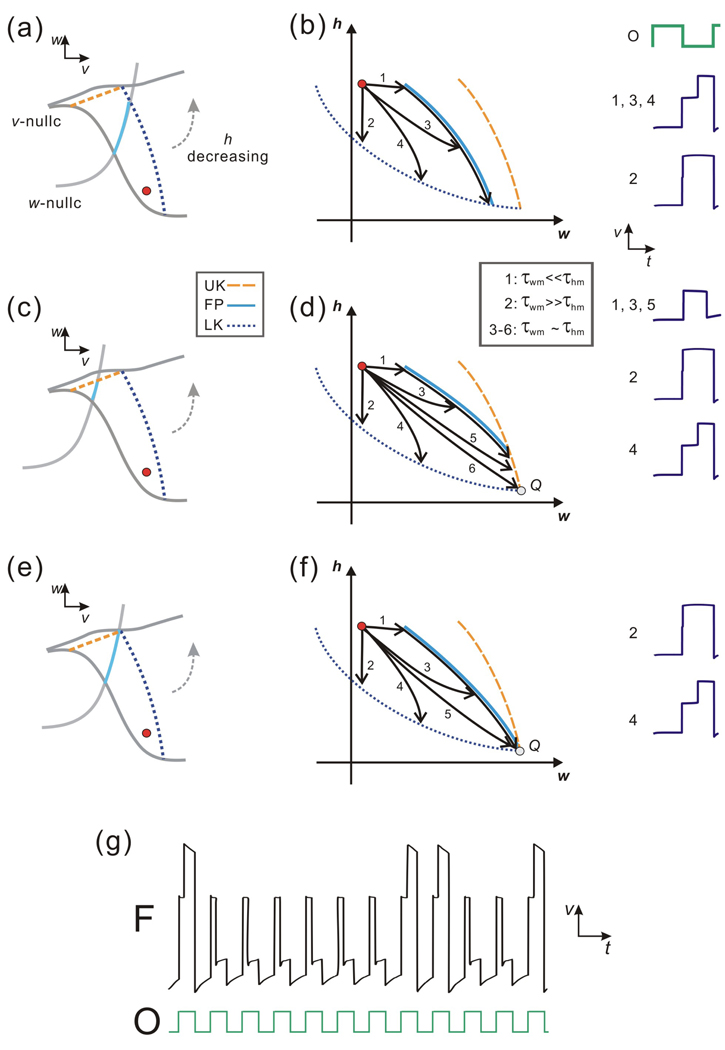Figure 5.
The dynamics of Case II in the v-w and w-h phase planes. (a) In Case II.a, the trace of FP intersects LK as h decreases in the v-w phase plane. (b) In the w-h phase plane, four subcases are possible for Case II.a based on the relative size of the two time constants τwm and τhm, though the fate for each subcase is the same: the trajectory reaches LK and then jumps to the right branch of the v-nullcline. The time traces for all subcases are shown on the right. (c) In Case II.b FP intersects UK, therefore the trajectory can jump either to the left or to the right depending on the two time constants τwm and τhm. (d) Five subcases can be achieved in the w-h phase plane for Case II.b based on the relative size of the two time constants τwm and τhm. The fate of the trajectories in Subcases 1, 3 and 5 is to reach UK and then jump to the left branch of the v-nullcline; the fate of Subcases 2 and 4 is to reach LK and then jump right; the fate of Subcase 6 is unclear as the trajectory reaches the intersection of LK and UK (Q). The time traces for Subcases 1–5 are shown on the right. (e) In Case II.c FP, UK and LK intersect at a single point. (f) In the w-h phase plane it shows that five subcases can be obtained for Case II.c. The fate of Subcases 2 and 4 is to reach LK and then jump right; the fate of Subcases 1, 3 and 5 is unclear as the trajectory is channeled to the intersection of UK and LK (Q) by the trace of FP. The time traces for Subcases 2 and 4 are shown on the right. (g) An example of numerical simulation for Subcases 3 or 5 of Case II.c over cycles, which demonstrates that in different cycles the trajectory (membrane potential) can jump to either RB (active state) or LB (inactive state).

